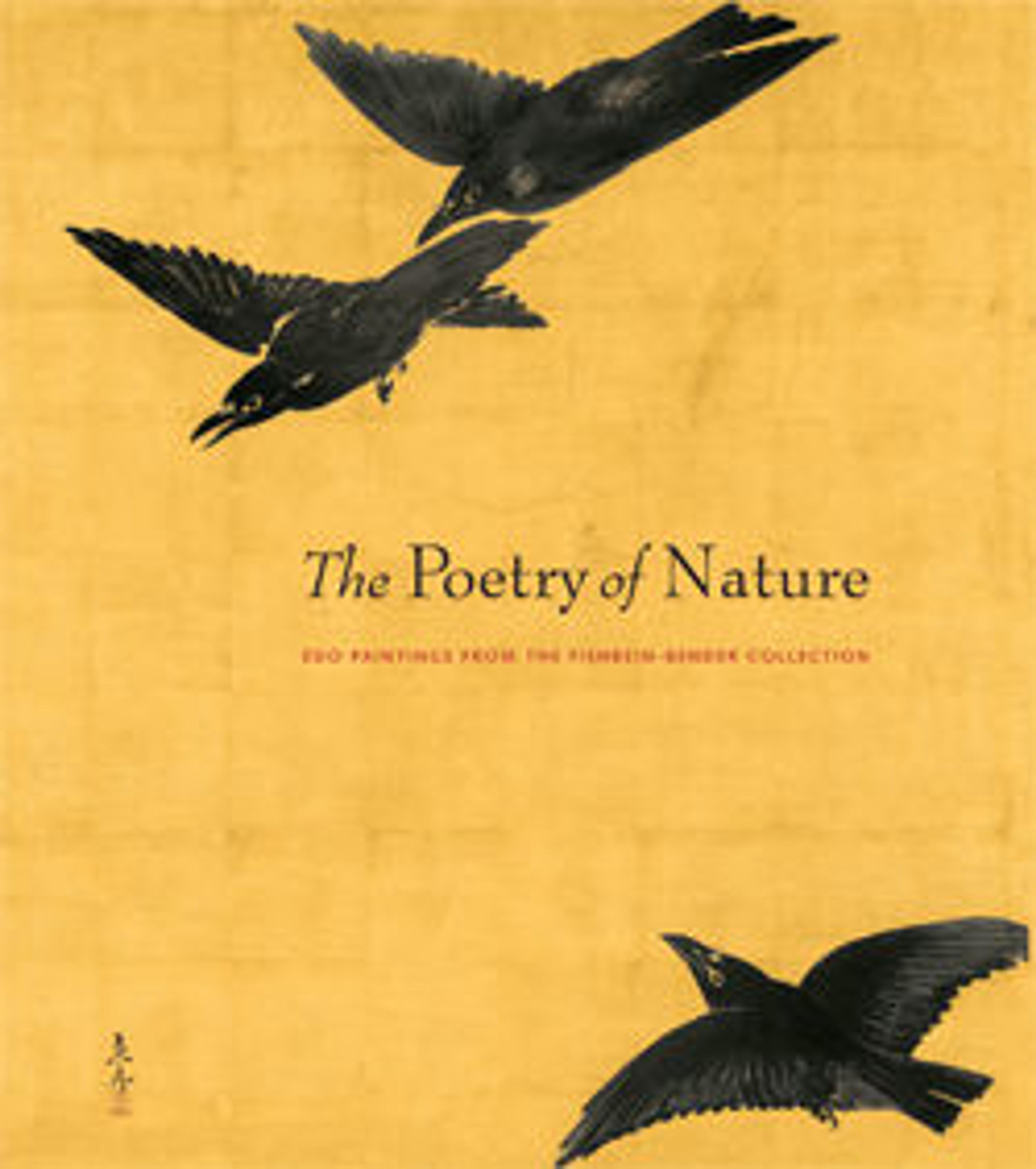Orchid Pavilion Gathering; Autumn Harvest Festival
This pair of screens by Ike Taiga, one of Japan’s most prominent literati painters, depicts two Chinese themes: the Orchid Pavilion Gathering on the right screen and, on the left screen, the Autumn Harvest Festival. A Tang-dynasty poem attributed to Wang Jia (born 851) and inscribed above in Taiga’s own calligraphy reads:
At the foot of Mount Ohu,
the rice and millet are fat.
Pigs are in their pens,
the chickens in their coops;
The door to the house
has been left ajar.
The Autumn Festival is over,
and in the evening
Mulberry leaves cast long shadows.
from every house tipsy men return,
holding each other up.
—Trans. adapted from Stephen D. Allee
At the foot of Mount Ohu,
the rice and millet are fat.
Pigs are in their pens,
the chickens in their coops;
The door to the house
has been left ajar.
The Autumn Festival is over,
and in the evening
Mulberry leaves cast long shadows.
from every house tipsy men return,
holding each other up.
—Trans. adapted from Stephen D. Allee
Artwork Details
- 池大雅筆 蘭亭曲水図屏風 秋社図屏風
- Title: Orchid Pavilion Gathering; Autumn Harvest Festival
- Artist: Ike no Taiga (Japanese, 1723–1776)
- Period: Edo period (1615–1868)
- Date: ca. 1763
- Culture: Japan
- Medium: Pair of six-panel folding screens; ink and color on paper
- Dimensions: Image (each): 63 1/4 in. × 11 ft. 8 3/16 in. (160.7 × 356 cm)
Overall with mounting: 69 9/16 in. × 12 ft. 2 7/16 in. (176.7 × 372 cm) - Classification: Paintings
- Credit Line: Mary Griggs Burke Collection, Gift of the Mary and Jackson Burke Foundation, 2015
- Object Number: 2015.300.163.1, .2
- Curatorial Department: Asian Art
More Artwork
Research Resources
The Met provides unparalleled resources for research and welcomes an international community of students and scholars. The Met's Open Access API is where creators and researchers can connect to the The Met collection. Open Access data and public domain images are available for unrestricted commercial and noncommercial use without permission or fee.
To request images under copyright and other restrictions, please use this Image Request form.
Feedback
We continue to research and examine historical and cultural context for objects in The Met collection. If you have comments or questions about this object record, please complete and submit this form. The Museum looks forward to receiving your comments.
